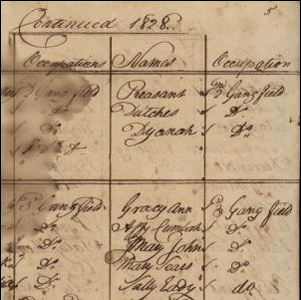About

This collection details the inner workings of Newton Plantation in the 1800s and contains several account and transaction ledgers. Specifically, this collection includes several day books (including the Newton Day Book or the Newton Plantation Day Book) originating between 1854-1872. These books provide records of monetary transactions on the plantation, including accounts payable and accounts receivable. This collection also includes the Newton Slave List, 1828, which records the names of slaves and their respective occupations on the plantation during that year. Additionally, the collection includes the Newton Plantation Cash Books from 1869-1873, a Stock Keepers and Watchmen book from 1862, and an 1849 Sugar Book, which contains records of sugar, rum, and molasses production on the plantation.
Newton Plantation is located in the parish of Christ Church in southern Barbados, and was first established by Samuel Newton in the 1660s. From the seventeenth to the eighteenth centuries, Newton was a major sugar plantation worked by enslaved people. In addition to the significant documentary record featured in this digital collection, this plantation was also the site of the Newton Burial Ground for enslaved people. Drs. Jerome Handler and Frederick Lange investigated and excavated this site in the 1970s, and their research formed the basis for Plantation Slavery in Barbados, a book published by Harvard University Press in 1978. These scholars estimate that roughly one thousand enslaved people died on Newton Plantation between 1670 and 1833, and they believed that an estimated 570 individuals are interred at the Newton Burial Ground. As part of its mandate, the Barbados Museum and Historical Society (BMHS) acquired the land where the Newton Burial Ground is located in the 1990s, and the museum is committed to the site’s protection and preservation for the people of Barbados and the region.
Related Terms:
- Barbados Museum and Historical Society
Institution:
- Books,
- Manuscripts
Media Types:
- Charleston County
